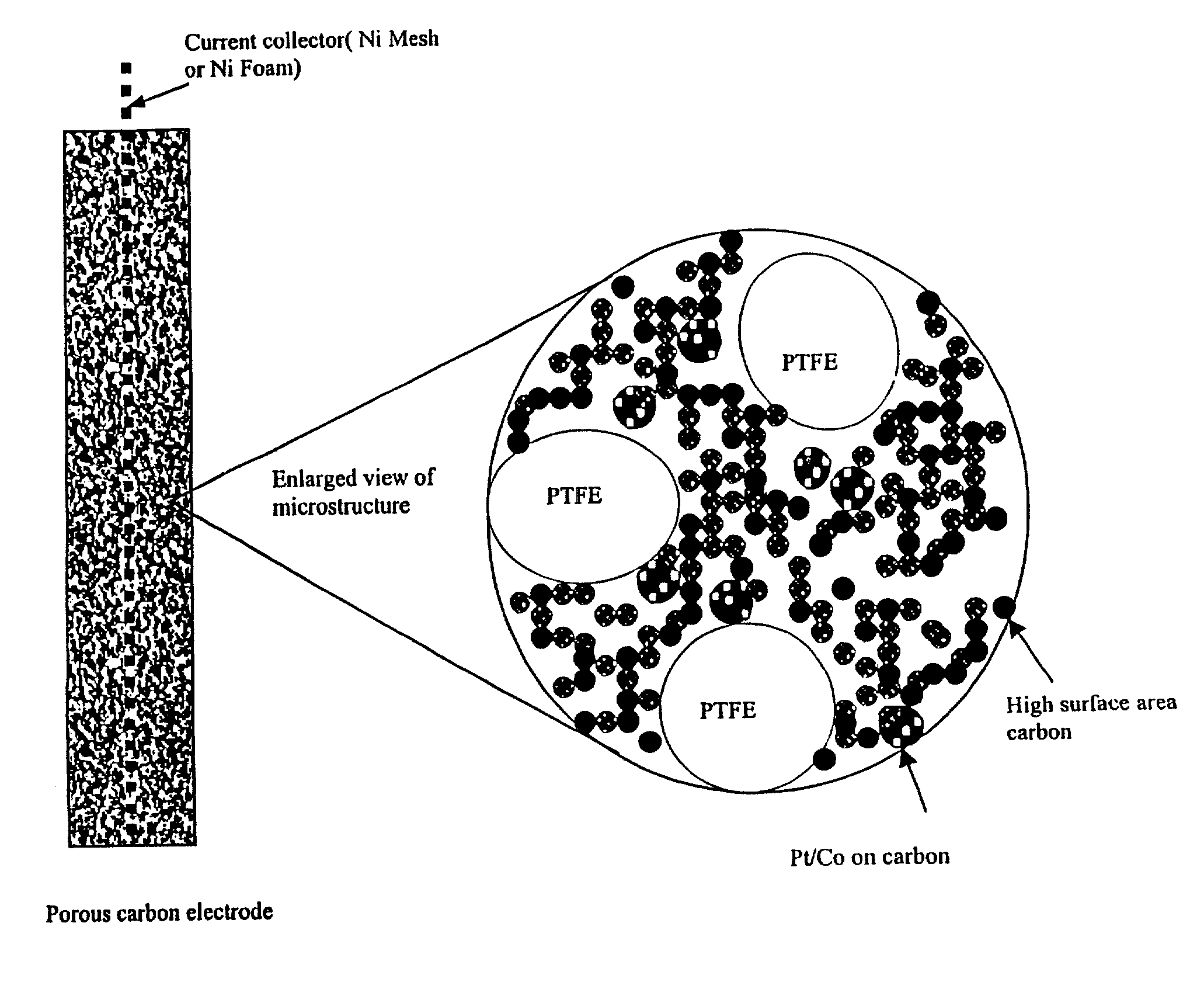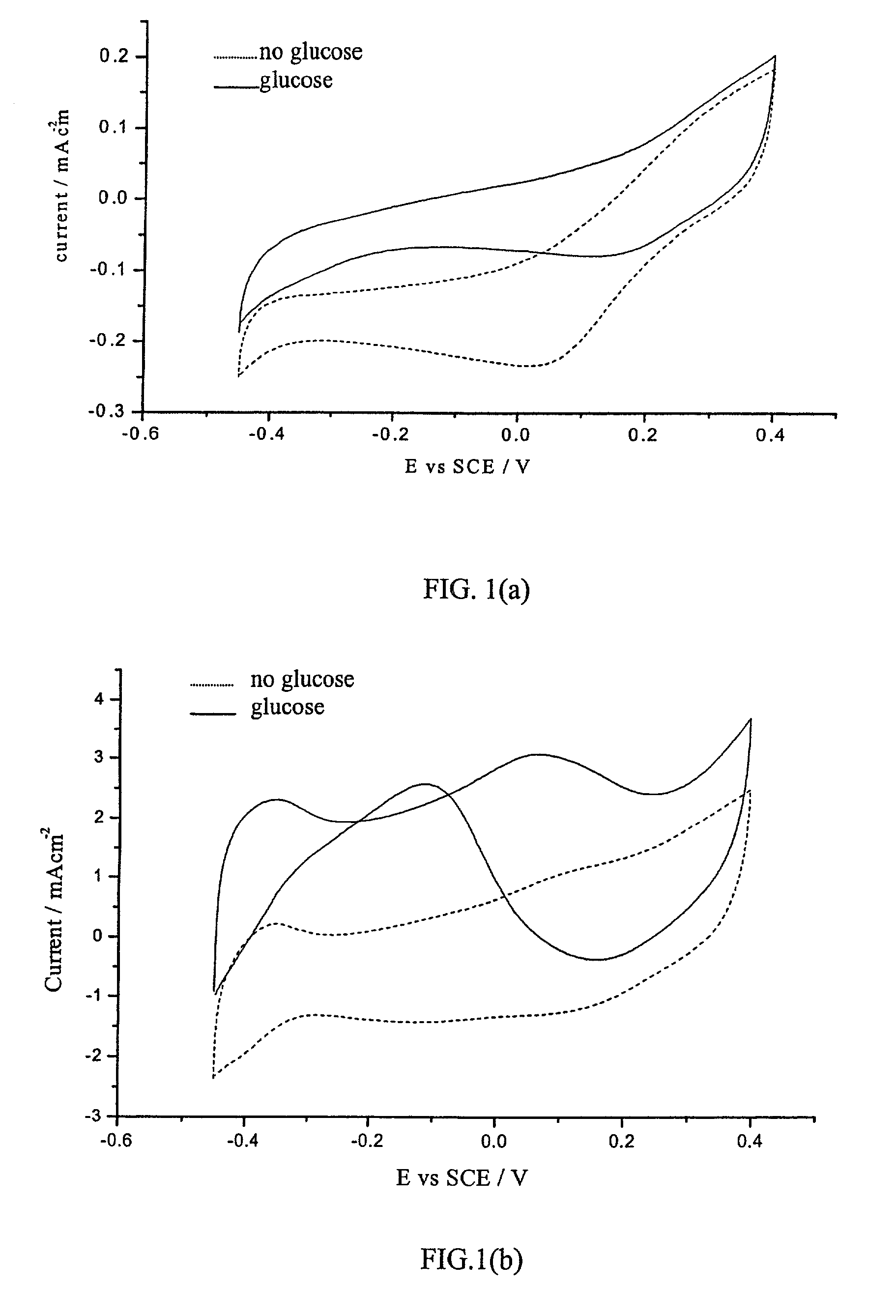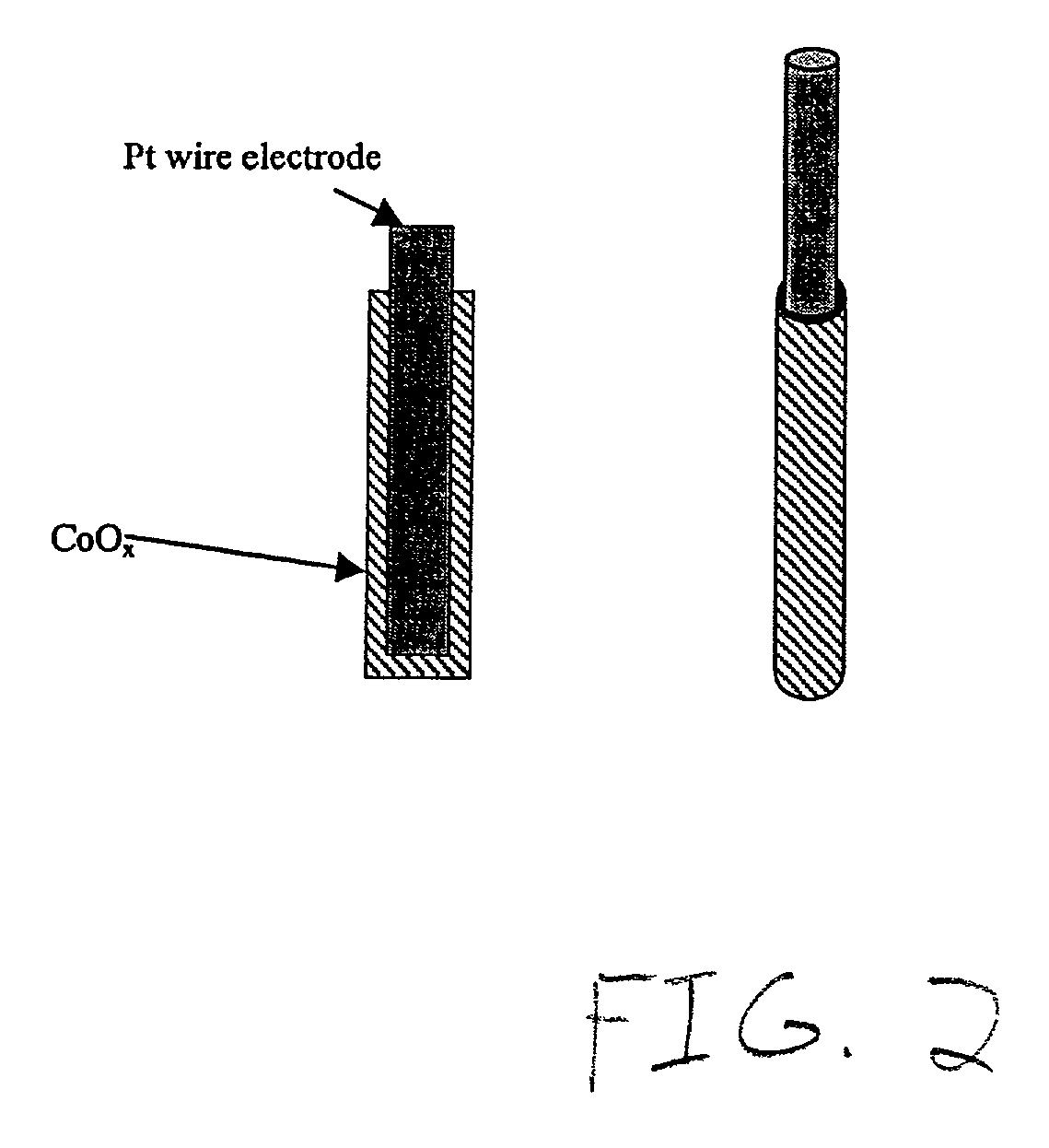Methods and apparatus for the oxidation of glucose molecules
a glucose and oxidation technology, applied in the field of inorganic catalysts, can solve the problems of limited shelf life, low tolerance to elevated temperature, and relatively high cost of enzymes, and achieve the effects of low oxidation potential and moderate to high current density
- Summary
- Abstract
- Description
- Claims
- Application Information
AI Technical Summary
Benefits of technology
Problems solved by technology
Method used
Image
Examples
example 1
[0038]A wire electrode with the electrocatalyst Pt / Co / Co3O4 giving the results shown in FIG. 1(b) was prepared as follows. Platinum and cobalt were co-deposited on a platinum wire of 0.5 mm diameter from a mixed solution of 0.3 molar CoCl6.6H2O and 0.032 molar chloroplatinic acid in deionized water (see FIG. 2 for schematic diagram of layered wire electrode). The immersed depth of the working electrode was 1 cm. A three-electrode cell was used with a platinum foil as the counter electrode and a saturated calomel electrode (SCE) as the reference electrode. Oxygen bubbles were introduced from a cylinder to impinge on the wire electrode so that reactive deposition forming cobalt oxides of CoO(OH), Co3O4, and Co2O3 occurred. The details of reactive deposition to produce oxides of cobalt with high surface area are described in the literature (Jiang, S. P. et al, 1990, Electrochem. Soc. 137:3374). The deposition was controlled galvanostatically at 17 mA / cm2 for 300 seconds and the rate of...
example 2
[0039]An anode carrying the electrocatalyst of this invention is prepared from a carbon electrode (ELAT electrodes from E-TEK Corp, New Jersey) by electrodeposition in a 0.04 molar H2PtCl6 and 0.098 molar CoCl2 solution at 50 mA cm−2 for 30 minutes. The resulting surface is analyzed to have 85.1 atom % Pt, 14.6 atom % Co and 0.3atom % Cl by EDX analyses. X-ray photoelectron spectroscopy indicated the oxidation state of cobalt is zero. The surface morphology is shown in FIG. 6 with appreciable roughness. The performance of this anode for the oxidation of 0.5 molar glucose in 0.5 molar NaOH is shown in FIG. 7.
example 3
[0040]An anode carrying the electrocatalyst of this invention is prepared by a chemical reduction method. Vulcan 72 activated carbon was added to a solution containing 40 mM hexachloroplatinic acid and 120 mM cobalt acetate in a ratio of 1 g to 50 ml. Excess hydrazine was added to reduce the platinum and cobalt. The carbon is used to make a paste with acetylene black and 60% polytetrafluoroethylene (PTFE) aqueous emulsion in the ratio of 70%, 10%, and 20% by weight respectively. The paste is applied to a piece of 1.5 mm thick, 400 g m−2 nickel foam. FIG. 13 shows the performance of a Pt / Co / C anode prepared by chemical reduction. The electrochemical oxidation of 0.5 molar glucose oxidation in 0.5 molar NaOH at 5 mA cm−2 is shown in FIG. 13 (i.e., the anodic oxidation is 0.5 M glucose in 0.5 M NaOH at 5mA cm−2 at 20° C.).
PUM
| Property | Measurement | Unit |
|---|---|---|
| Percent by mass | aaaaa | aaaaa |
| Percent by mass | aaaaa | aaaaa |
| Percent by mass | aaaaa | aaaaa |
Abstract
Description
Claims
Application Information
 Login to View More
Login to View More - R&D
- Intellectual Property
- Life Sciences
- Materials
- Tech Scout
- Unparalleled Data Quality
- Higher Quality Content
- 60% Fewer Hallucinations
Browse by: Latest US Patents, China's latest patents, Technical Efficacy Thesaurus, Application Domain, Technology Topic, Popular Technical Reports.
© 2025 PatSnap. All rights reserved.Legal|Privacy policy|Modern Slavery Act Transparency Statement|Sitemap|About US| Contact US: help@patsnap.com



